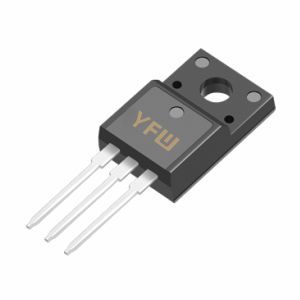Relays contain coils—inductive components that store energy in magnetic fields when energized. When the relay disconnects (i.e., the control signal stops), the magnetic field collapses rapidly, inducing a high-voltage spike known as inductive kickback or back EMF (electromotive force) . This voltage can reach hundreds or even thousands of volts, far exceeding the circuit’s rated voltage. Without proper mitigation, this surge could damage sensitive components like transistors, MOSFETs, or the power supply itself .
A flyback diode (also called a freewheeling diode) is strategically placed in parallel across the relay coil. Its function is twofold:
Provide a Safe Discharge Path: When the relay opens, the diode creates a low-impedance loop for the inductive current to circulate. This allows the stored magnetic energy to dissipate gradually as heat in the diode and coil, rather than abruptly releasing as a destructive voltage spike .
Suppress Reverse Voltage: By conducting in the reverse direction during the transient phase, the diode clamps the voltage across the coil to approximately 0.7V (for silicon diodes), preventing back EMF from propagating into the power supply or other circuitry .
Contrary to misconceptions, the flyback diode’s current loop is localized and does not feed back into the power supply. The energy released during the relay’s disconnection is entirely contained within the diode-coil circuit, ensuring no additional load is imposed on the power source . In fact, the diode’s presence reduces stress on the power supply by eliminating voltage transients that could otherwise cause ripple or premature aging .
To maximize protection, follow these guidelines:
Voltage Rating: Choose a diode with a reverse voltage rating at least twice the supply voltage. For example, YFW’s 1N4007 (600V rating) is ideal for most low-voltage relay applications .
Current Handling: Ensure the diode can handle the relay’s peak current. YFW’s G1006DS (10A average current) is suitable for high-power scenarios .
Fast Recovery: Opt for fast-recovery diodes (e.g., YFW’s UF series) in high-frequency circuits to minimize switching losses and noise .
Physical Placement: Install the diode as close to the relay coil as possible to reduce parasitic inductance and improve response time .
Beyond preserving the power supply, flyback diodes offer additional advantages:
Extended Component Lifespan: Reduces arcing at relay contacts, preventing pitting and mechanical wear .
EMI Reduction: Dampens electromagnetic interference, ensuring compliance with regulatory standards .
System Stability: Maintains consistent voltage levels, critical for analog circuits and microcontroller-driven systems .
The flyback diode circuit is not a threat but a
vital safeguard for power supplies and relay-driven systems. By providing a controlled discharge path for inductive energy, it eliminates voltage spikes, enhances component reliability, and ensures seamless operation. For optimal performance, partner with trusted manufacturers like
YFW (佑风微), whose high-quality diodes—such as the
1N4007 and
G1006DS—are engineered to meet rigorous industrial demands. Visit
www.yfwdiode.com to explore our comprehensive range of circuit protection solutions.
Never compromise on safety. Choose YFW for robust, efficient, and future-proof designs.
